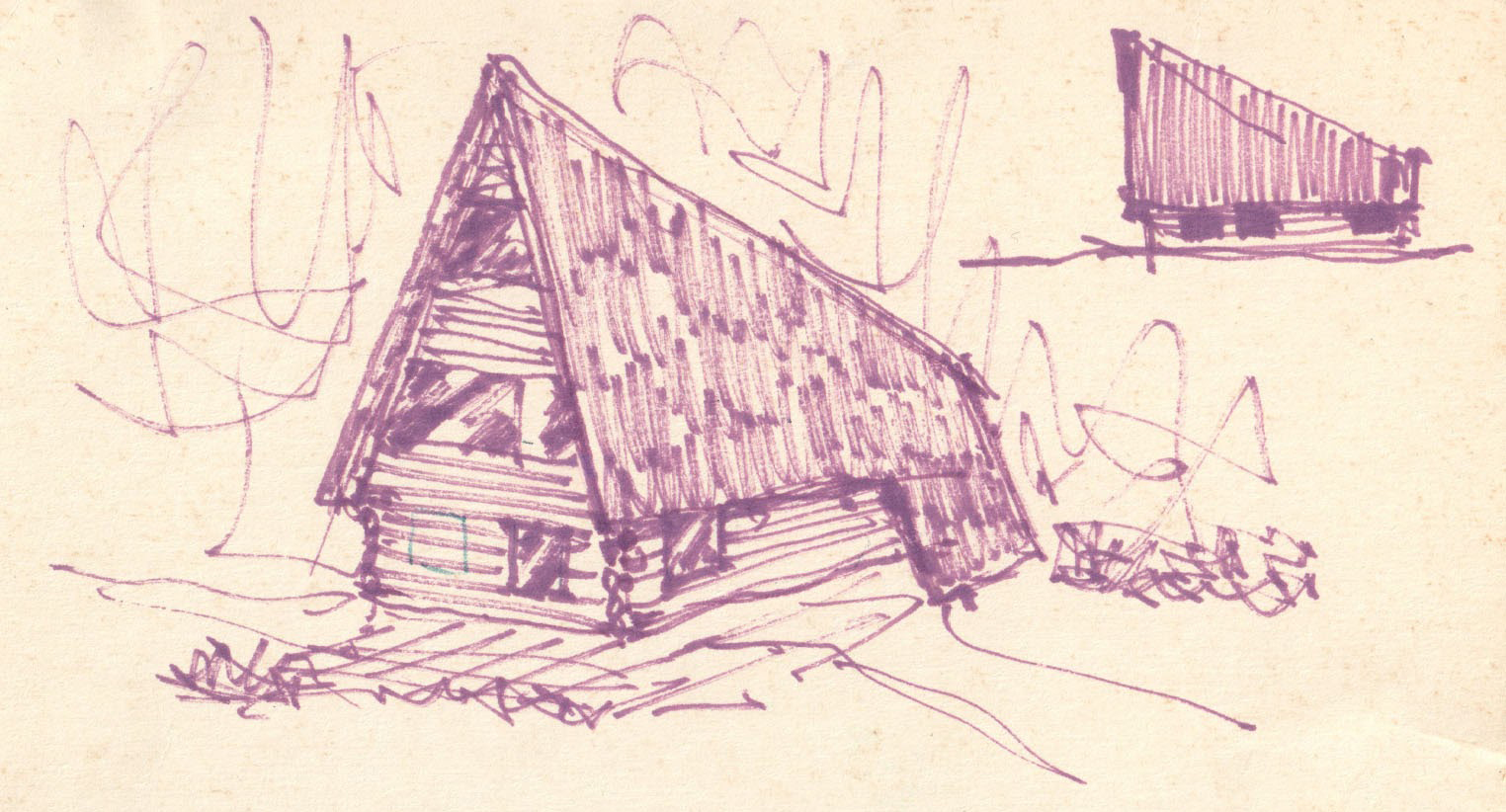Welcome to my second story! This time, I want to tell you about my home in Murjāņi, given me by my good friend Imants Ziedonis. In Murjāņi.
The distance from the very centre of Riga – the capital of Latvia, the place where the Freedom Monument stands – to our port of safety, the Ziedonis Museum is 40 kilometres. The museum is the poet's summer house, which he conceived together with his wife Ausma Ziedone-Kantāne, an acclaimed Latvian actress. He conceived and built this haven from the materials permitted and available during the Soviet era – wooden logs that formed the construction, while the roof was thatched with reeds of the lake.

The interior, furniture and household items are created with their own hands from natural materials or ordinary things, giving them a new shape and function. If tea cups are needed, they must be made of clay. If rooms need carpets or old chairs need to be restored, then father's fishing nets must be used. A wall tapestry – out of relatives' old dresses, shirts and trousers. Storage of clothes – in old dowry chests. Or in the granary, which the poet sought for many years, until he found it and transported to his homestead, saving it from destruction. Through creating an environment saturated with Latvianness, and using objects linked to his parents and childhood, Imants Ziedonis has tried to encapsulate the presence of both. For the daily presence of root power.
.jpeg)
When Ausma concluded her theatre season, around Midsummer, they both arrived here and our Murjāņi summer house came alive. The creative spirit flowed. Here, one could elude the hustle and bustle of the city, the pollution, the noise, in poet's own words – the great nonsense. He came here to cool off in nature and to empty himself, to discharge everything he had accumulated. Away from the city, folks and thoughts of strangers. And only when he had emptied himself could he create again. In silence.
A large part of Imants' works has been composed here, like "Poem about Milk", intertwining Latvian folk songs, Indian Upanishads and ideas arising from the cult of mother. Here he wrote several collections of poems, epiphanies and pieces of documentary journalism.
Of course, we had parties. Traditionally, the biggest gathering took place on Imants' name day – July 1, when poets, writers, artists, teachers, scientists, pastors, musicians, journalists, cultural workers and many more came here along with relatives and friends! The guests arrived, talked, got to know each other, while in the midst of it all the spirit of Imants emitted sparks of jokes, boyish play and provocations.
.jpeg)
When I helped to establish Ziedonis Museum, I said that we must first talk to those who knew Imants. They said, all as one – you will not catch him! He is polyhedral, so diverse and constantly changing. The museum grew like a temple of muses, safeguarding the authenticity and aura of the house. The environment creates a mood. There is not a single guide who knows best. Instead, there are books by Imants Ziedonis that help to approach the poet. Usually everyone comes closer to themselves. There are several tasks and hints on how to approach Imants, yet each visitor must do it individually. In his or her own way, own rhythm, individually. Even in a group visit.
The museum is s.png) easonal, – when the weather
easonal, – when the weather
warms up, toward the summer, I also go there after spending wintertime in Riga, and work together with the museum colleagues. I welcome visitors. During the summer, we meet here in film evenings, conversation afternoons, museum symposia, educational events, creative camps, concerts, yoga poses and meditations. When autumn comes, we close up Murjāņi for the winter. Meanwhile, all year round, Murjāņi can be visited digitally anywhere in the world: online!
Imants Ziedonis once said – his museum could also be a road, that “The road is the whole life, the whole philosophy. You just have to walk a long way until wisdom starts to course through your feet”
Therefore, in the next story I will tell you about the road network of the museum throughout Latvia.